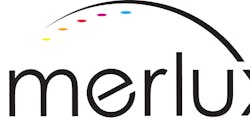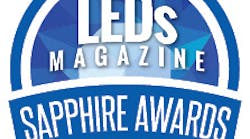The Technology track at the 15th-anniversary Strategies in Light (SIL) conference will include an LED-focused presentation entitled "Technology trends in components in the next five years" that will be presented by Osram Opto Semiconductors CTO Ulrich Steegmueller. The SIL talk will cover semiconductor engineering to manufacturing processes. That topic led us to ask Osram about some market-driven trends in the component space and resulted in this question and answer session with Markus Klein, vice president and general manager of solid-state lighting (SSL). The interview covers component specialization demanded by the SSL industry, recent trends in LEDs for lighting, and the challenge of being a vertically integrated company that also sells enabling technology in the form of LEDs.
LEDs Magazine: The LED industry has progressed from a state where a small number of product families were applied in a wide set of applications to the point where there is seemingly an LED designed specifically for every application. How is Osram coping with the requirement for specialization while also trying to deliver on the customer demand for lower prices that would be more easily achieved by high-volume production of a single component?
Markus Klein: For us it is a kind of a standard procedure to develop application-specific products. As a result, we have one of the broadest product portfolios in the industry. As prerequisite for low cost, we have to follow a strict platform strategy in each step of the value chain. With the use of chip and phosphor portfolios, as well as package platform architectures, we can leverage volume effects. At the same time, we are able to meet customers’ individual requirements. Overall, customization depends on the application segment. Some applications require specific designs, examples being headlamps or flash lights. Others are more commoditized like tubes, retrofits, or even streetlighting. Using a toolbox approach is the key to customized cost competitiveness.
LEDs Magazine: Two easily identifiable component trends have been the proliferation of mid-power LEDs that have the potential of lowering system cost and also the popularity of COB LEDs that simplify SSL product design. Can you discuss how Osram is approaching those segments, the success you have had, and how you project growth in those segments relative to high-power LEDs?
Klein: Osram Opto Semiconductors successfully has been and will be extending its portfolio in mid-power and COB LEDs. After all, low- or mid-power and COB LEDs are the major growth segments in SSL, driven by operational areas such as linear applications, light engines, or downlights. High-power LEDs, however, will remain the main light sources for applications like narrow beam-angle applications or streetlighting. Then again, mid-power LEDs like Osram Duris S 5 are improving in reliability due to the use of more stable plastics, amongst other things. It’s cutting into some applications where high-power ceramic packages have dominated for reliability reasons in the past.
LEDs Magazine: While COB LEDs do simplify the design given that the driver has to connect to a single component, do you believe that COB LEDs can match the optical performance of a well-designed product using multiple high-power LEDs?
Klein: High-power LEDs are mainly being used for directional and other optically demanding applications. Some of the applications can be served by standard COBs right ahead — given that the optical requirements are not too critical. Still, narrow beam applications require high-intensity; for this, COBs with high-power chips are used. Osram Opto Semiconductors is offering with Soleriq P an adequate platform. Here, the COB is based on its proprietary UX:3 chip technology.
LEDs Magazine: Your most recent high-power LED announcement was focused on high-temperature operation and the advantages good thermal performance can bring in terms of reducing the LED count in a system while still enabling reliable products. Osram was late to stress thermal performance and to characterize and bin LEDs at an elevated temperature. What gated your transition in thermal and why did it become important to make the change?
Klein: As almost no LED is being operated at room temperature, our focus for optimization has been elevated temperatures for a long time now. The recent announcement focused on a break-through which in particular is visible at higher temperatures. Here, the efficiency even increases over temperature for some converter systems. Binning at elevated temperatures provides an additional accuracy on top of the typical shift of LED over temperature. Hot binned Osram LEDs will bring our customers additional accuracy.
LEDs Magazine: Osram has been very strong in LEDs for vertical applications such as automotive, but perhaps not as strong in the area of general illumination. While automotive applications and other niches will remain valuable markets, it's clear that general lighting will drive the market. What steps has Osram taken to advance its position in general lighting?
Klein: Indeed, as general illumination will drive the market, advancing our position here is a core element of our strategy. We are taking a variety of steps which are complementing each other. Examples are: strong investments in product development to complete our offered product range, leveraging our internal access to the lighting business by early involvement in product and technology development, and utilizing external partners for the production of selected products according to our specification. Especially in expanding our product portfolio for general lighting we made a lot of progress. With our portfolio from low- and mid-power up to ultrahigh-power LEDs, we can serve all fields of lighting applications with optimum system efficiency at our customers, i.e., best performance at lowest inset of resources.
LEDs Magazine: Osram Opto Semiconductors, like several other LED manufacturers, is part of a broadly-focused lighting company. How do you handle the potential conflict of supplying enabling components to customers that are also competitive with products from the lighting business? Moreover, does the lighting business get access to Osram LED technology before it's offered commercially or perhaps get access to technology features that aren't sold commercially? Does Osram Opto have to compete with other LED manufacturers to win business from the Osram lighting business?
Klein: The basis of our internal cooperation with Osram’s lighting business is an early and mutual involvement in technology and product roadmapping. Furthermore, we have joint development projects. In case we and our enabling products are involved in the development projects of other lighting companies, we have established Chinese walls to protect their know-how. On the other side we have to compete with other LED manufacturers at our mother company, too, to win business which in our view ensures long-term competitiveness. That’s quite common in all lighting companies.
LEDs Magazine: How can the LED manufacturer help in the problem lighting designers/specifiers face in needing to buy products with consistent color and lumen output over extended periods of time, given the fast pace of change in the component industry?
Klein: Osram Opto Semiconductors is very active in developing models of its individual components like chip, phosphor, and packages — based on a broad basis of experimental data. These models help us in two aspects: First and foremost, we have the assurance that newly composed LEDs fulfill the requirements of our customers. Second, it allows accelerated tests to experimentally measure lifetime. Next to conducting standard LM-80 tests, we are working towards implementing further acceleration methods into standardization bodies.




